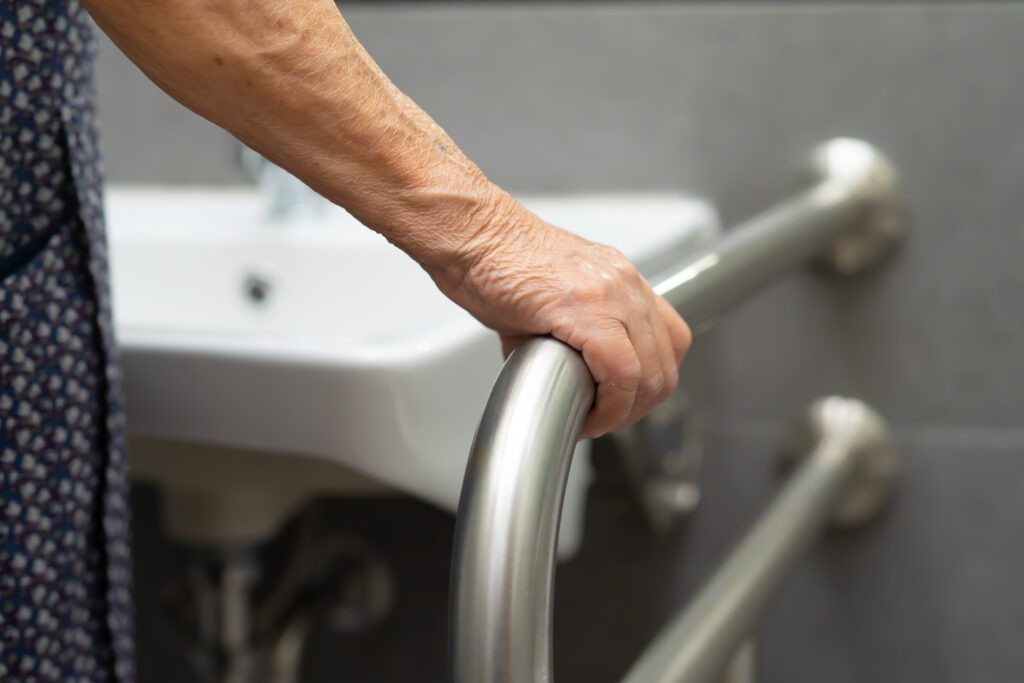by Dr. JOY JACKSON, MD, Director of DOH-Polk
A peril of aging is the increased risk of falls. Falls are the No. 1 cause of injury and injury-related death among seniors ages 65 and older. The statistics are equally dire in Polk County: Falls are the leading cause of unintentional fatal injury among seniors ages 65 and older.
In particular, seniors with dementia are four to five times more likely to fall compared to seniors without dementia.
So why are seniors with dementia at higher risk for falls?
Dementia can impair a person’s capacity to think, make decisions, remember, and perform their daily activities. It can impair a person’s visual perception and their coordination. Dementia can even cause a change in senses like sight, sound, and touch. An individual with dementia could forget to use their cane while walking. They could misjudge where the stairs are or have poor balance.
Prevention
Understanding why people with dementia are prone to falls is key to preventing it.
- Clutter. An important strategy in reducing falls caused by dementia is making a person’s environment fall-proof. Decluttering the home has been shown to help in reducing falls. The home should be inspected for loose rugs and carpets that could cause a fall. Tripping hazards like electrical cords should be moved out of the path that an individual might walk in the home. Keeping the furniture arrangement simple could also help reduce falls. Walkways should be clear of clutter inside and outside the home.
- Light. Since dementia can affect visual perception, the home should be well lit so that there are no dark areas. Plugging in night-lights or leaving lamps on could help an individual avoid a fall when they get up in the middle of the night to go to the bathroom. Using contrasting colors for furniture versus the floor and the walls could help someone who struggles with their vision.
- Safety equipment. Being proactive about safety equipment can also help reduce the risk of falls. Footwear should have good grip and fit properly. If necessary, a person might need an assistive device to help them get around. These assistive devices could be a cane or a walker for balance. If needed, there could be changes made to the home such as handrails for stairways, raised toilet seats, or grab bars for the bathroom.
- Daily schedule. Routine and organization can compensate for the progression of cognitive decline. A daily schedule of tasks could be posted in a single location. Reminders of where items are could be posted all over the home. Commonly used items like medications and glasses could be kept within arm’s reach, perhaps at a bedside table. These tips could help with confusion and potential wandering that could lead to falls. A cellphone should be kept on the person at all times and fall alert bracelets could be used in an emergency.
- Activity. Staying physically and mentally active is another important tool to help reduce the risk of falls. Depending on a medical professional’s advice, there are fall-prevention exercises that can increase stability, coordination, and balance. Exercises that work out the brain like art therapy, music therapy, and even doing puzzles and playing games can decrease the effects of dementia. Socializing with other people can help slow down symptoms of dementia.
Being proactive about the dangers seniors with dementia can face is the best way to help them navigate their reality.
About the Author: Dr. Joy Jackson, an internal medicine physician, serves the community as director of the Florida Department of Health in Polk County (DOH-Polk). For more information about DOH-Polk, visit mypolkhealth.org. Follow DOH-Polk on Twitter at twitter.com/FLHealthPolk.
